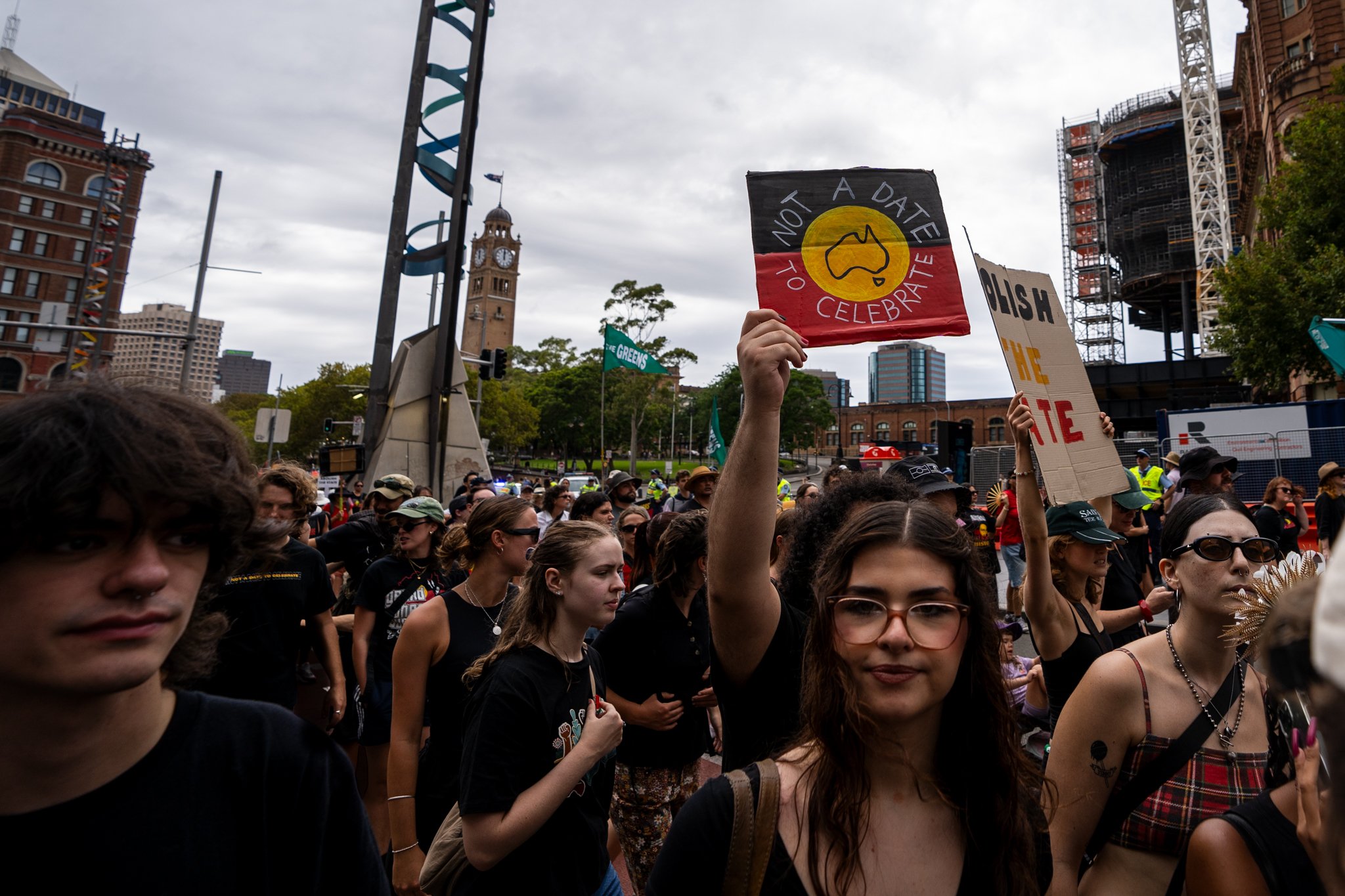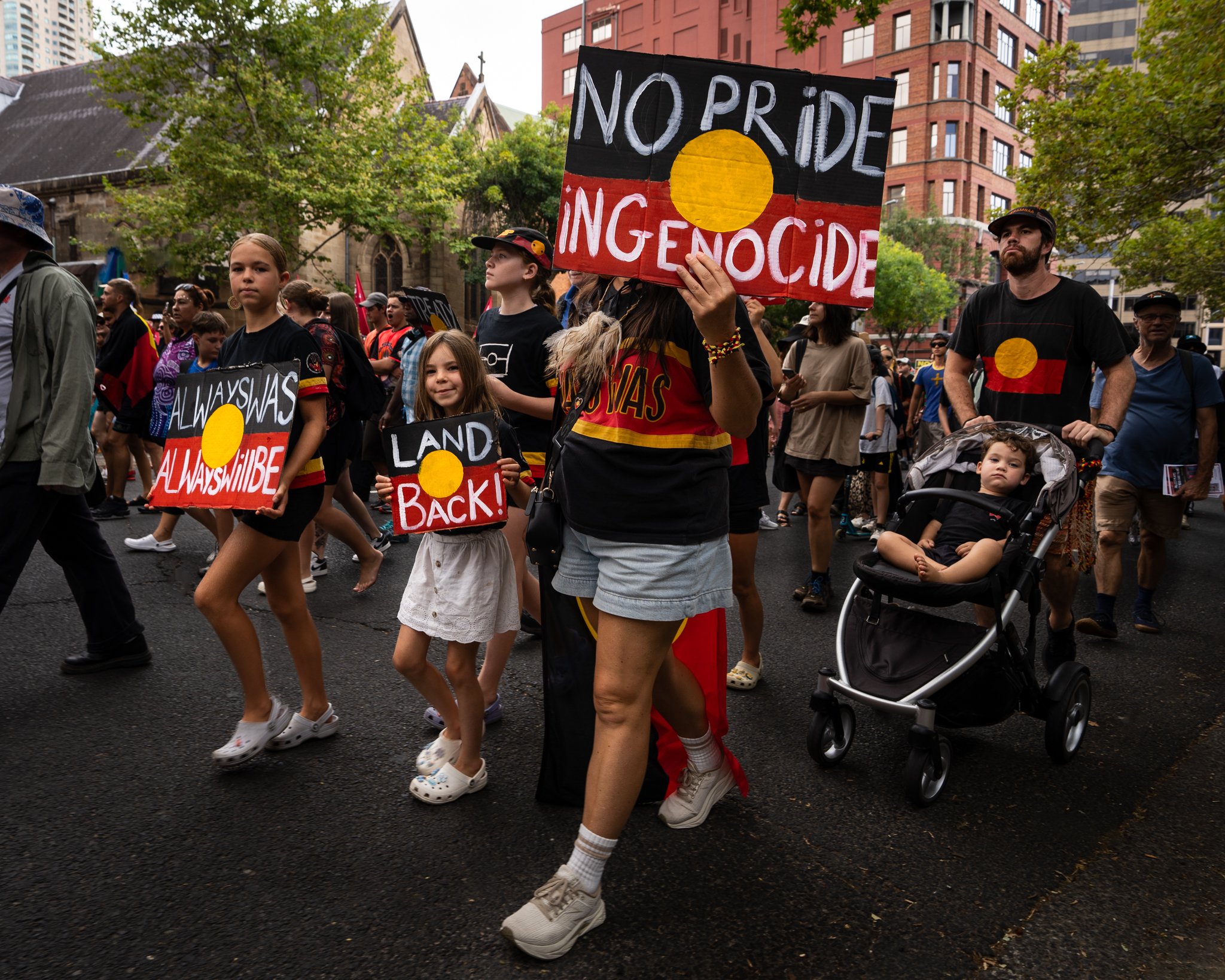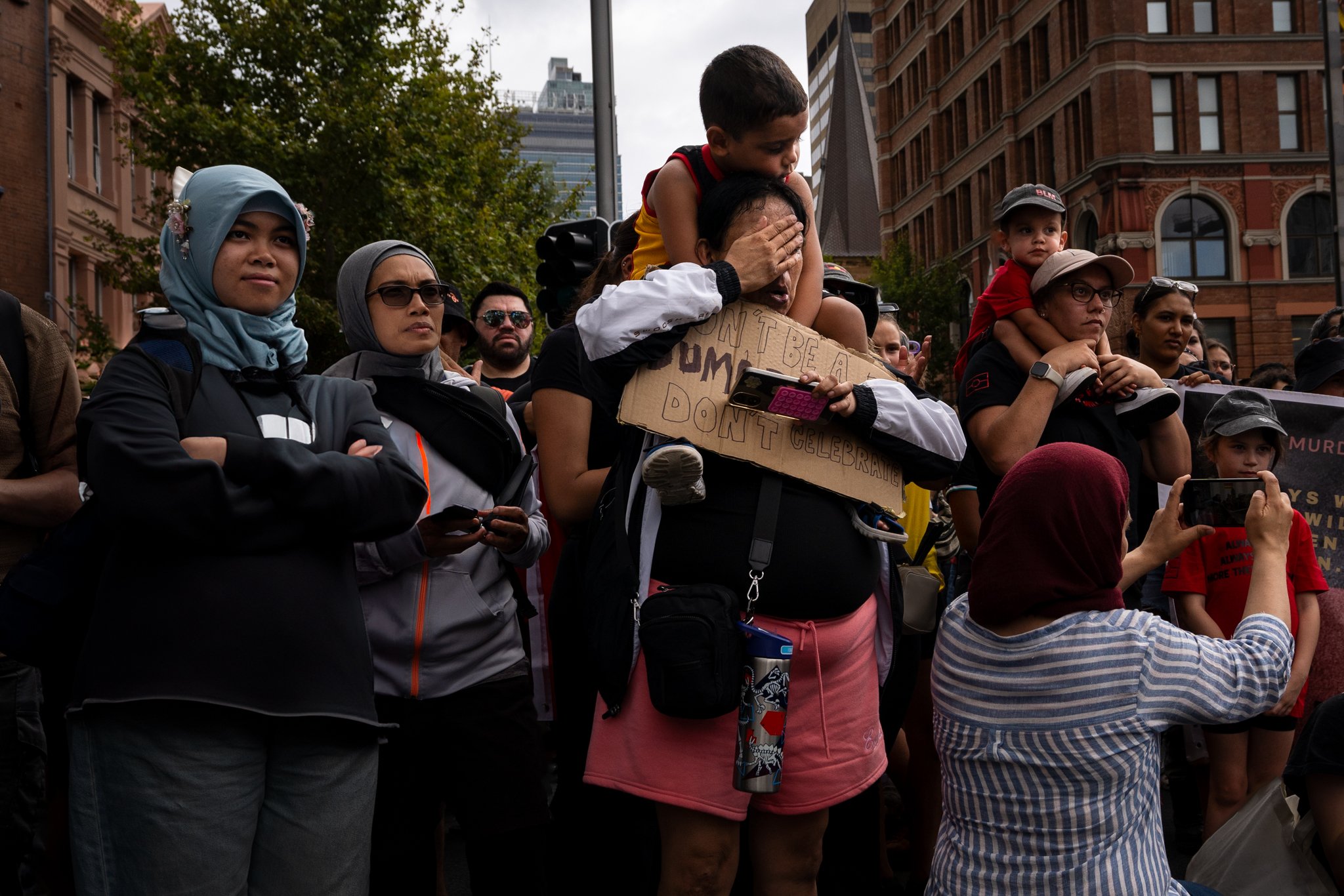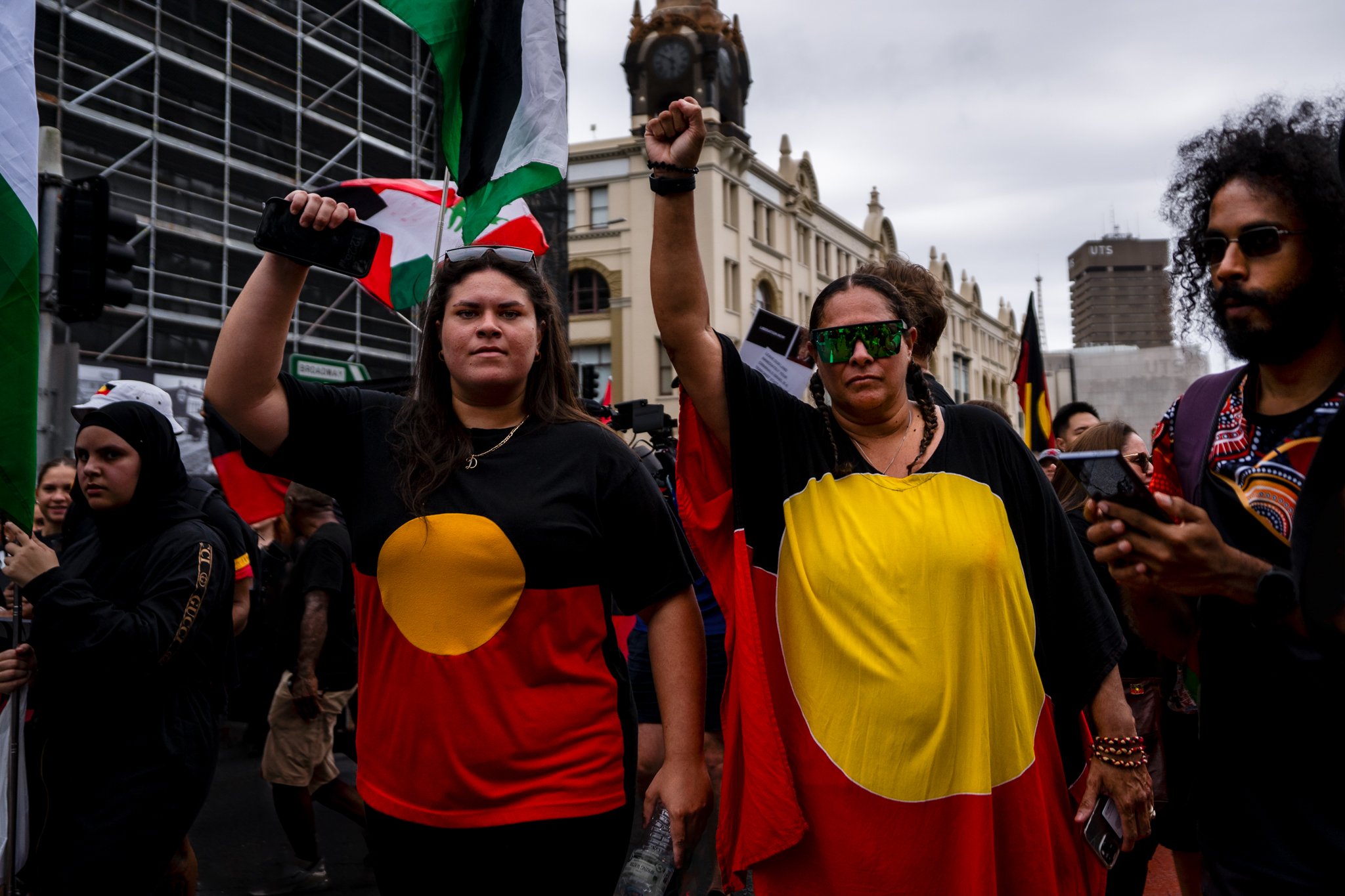Invasion Day Protest: Photography Documenting Blak Resistance and Solidarity
Capturing a Day of Truth and Protest
Every year on January 26, across so-called Australia, Aboriginal and Torres Strait Islander communities gather not to celebrate — but to resist, remember, and call for justice. Known as Invasion Day, Survival Day, or Day of Mourning, the date marks the beginning of ongoing colonisation, dispossession, and harm.
This photo series documents the 2025 Protest in Sydney, Australia, a gathering not of anger alone, but of strength, pride, and unwavering presence. Shot from within the crowd, not apart from it, the images aim to witness what the media often won’t: the unity, the leadership, the truth-telling.
A First Nations Perspective on the Frontlines
As a proud Palawa storyteller, I walk into spaces like this not as an outsider, but as someone with skin in the game. These are my people. My elders. My kin. My future. There is no journalistic distance here, there is lived experience.
This work is created with respect, responsibility, and relational accountability. I don't just document protests, I participate in them. My camera is a tool, not a barrier.
Beyond the Headlines
Mainstream coverage often flattens Invasion Day into a spectacle: anger, slogans, disruption. But look closer and you’ll see what I did, families marching with their kids. Elders wrapped in flags. Signs that carry names. Tears that carry generations.
These photographs centre those quiet truths. The strength in softness. The power in presence. They are acts of remembrance and resistance. Of community showing up for itself and demanding to be seen.
Photography as Protest
Documenting Invasion Day is an act of protest in itself. It becomes part of the archive proof that we were there, that we stood up, that we will not be erased. These images live beyond social media feeds. They are part of the visual memory of resistance movements in so-called Australia.
They’re also an offering for those who couldn’t march, for those who’ve marched every year, and for those still learning. May they open space for truth and reflection.
Ethical Documentation
Consent and respect guided every frame. Faces were included with awareness and, when possible, permission. If you appear in one of these images and would like it removed, please reach out. These images are about empowerment — never exploitation.
See the Series
Scroll down to explore the photo essay. These frames are unfiltered moments from a powerful day. Some carry weight. Some carry beauty. All carry truth.
If you’re interested in exhibiting or licensing this work as part of a broader discussion on sovereignty, protest, or First Nations justice movements, get in touch.






























